Many thanks to SWLing Post contributor, Dan Robinson, who publishes the following guest post:
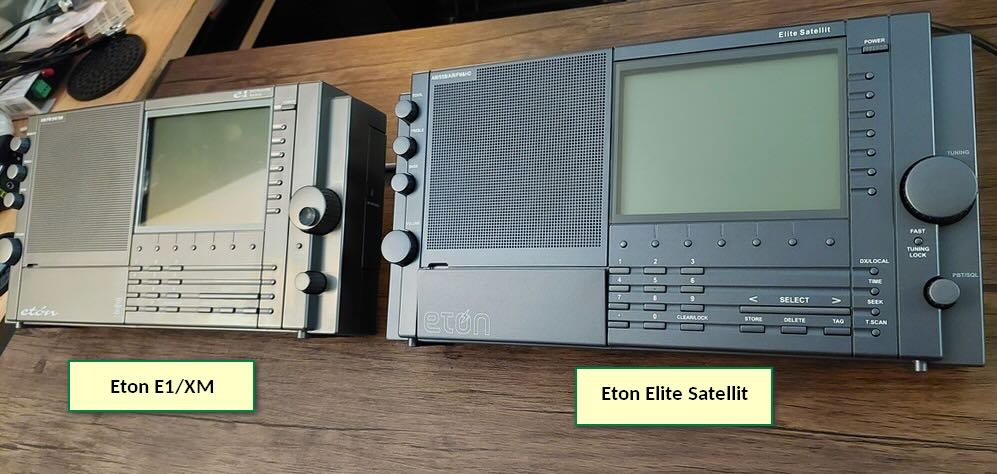 Letter to Eton: Cutting Corners on Elite Satellit Won’t Succeed
Letter to Eton: Cutting Corners on Elite Satellit Won’t Succeed
by Dan Robinson
As SWLing.com readers will recall, weeks before Eton shipped the first group of Elite Satellit receivers I published a commentary that asked a key question: would Eton be able to meet the higher standards of the listening community in 2022 when it comes to new advanced portables?
Unfortunately, we all see what the answer to that question was. Eton was forced to recall Elite Satellit radios that had been shipped to major resellers such as Universal Radio, Ham Radio Outlet, and others as defects became all too apparent.
A radio that had been on its way to me for review was among those recalled. But I recently was able to examine a unit that a friend in the Washington, DC area purchased. What I found I am putting in this commentary as a letter to Eton.
If the company takes these points seriously, I think there is still hope that the Elite Satellit can join the ranks of respectable multi-band portables – after Eton has gone back to the drawing board so to speak. However, if Eton continues to cut corners with this receiver, its future is not bright:
Letter to Eton on the Elite Satellit
MUTING WHILE TUNING
As many who purchased or tested the Elite Satellit have remarked, the fact that you decided to release a radio with this issue is beyond comprehension. Tuning on the Elite Satellit is, tragically, an uncomfortable and frustrating experience. This needs to be corrected/fixed – you only need to take a look at Tecsun receivers such as the H-501 or PL-990x to know what needs to be done.
POORLY-IMPLEMENTED PASSBAND TUNING
Perhaps even more puzzling than muting, the Elite Satellit I tested had an even more mind-boggling issue. Passband tuning should function to adjust the signal pitch without changing the audio frequency. On the radio I tested, PBT was actually TUNING and changing the frequency. Using PBT on this radio was virtually no different from tuning in SSB, with injected tones heard, until a zero beat was achieved. All you had to do was take a look at a E1 receiver, or any other receiver with well-implemented PBT to understand how real PBT is supposed to function.
As a colleague remarked, the Elite Satellit “seems to be functioning as a BFO.” Obviously, a BFO is not PBT. Moreover, there’s not really any need for a BFO on a receiver that has USB & LSB modes plus 10 Hz tuning.” On top of that, why does PBT work only in SSB and non-synchronous AM? On the E1, PBT is full service, including on non-SYNC AM. All of this needs to be corrected. If the problem involves DSP chip issues, then Eton has a lot of work to do to find a solution.
LOCKUP ON FM/HD
As others have noted, the receiver locked up when tuning FM/HD signals, requiring a hard reset of the radio. I could not even tell what HD sub-channels existed on certain frequencies. This needs to be corrected.
TERRIBLE AGC
Again, you had the example of the E1 – but instead of taking a superb feature on that older receiver which provided the user with AUTO, SLOW, and FAST modes, designers of the Elite Satellit provided only ON or OFF. As well, on the radio I tested AGC response was terrible, with a long delay before audio returned to listenable level. But even if one turns AGC off, is there any way to control RF manually? It appears not, unless I missed something. This needs to be corrected – I would strongly recommend SLOW, MEDIUM, FAST and OFF options.
INCONSISTENT DISPLAY ISSUES
It’s one thing to have the neat feature of multi-color display – quite another to ensure QC. On the receiver I tested, the display seemed to suffer from inconsistent coloration. All labels on every radio should be of consistent clear quality.
ABSENT RECALIBRATION FUNCTION
In the E1 receiver, designed and produced in conjunction with R.L. Drake there was a way to access the Master Oscillator adjustable potentiometer, via a small hole visible through the back cabinet of the receiver. Though a very touchy adjustment due to the low quality of the plastic, it nonetheless satisfied users wanting to make such an adjustment.
Photos published previously here on SWLing.com show a OSC port visible on a main board inside the Elite Satellit. But there is no way to easily access this adjustment point – doing so requires removing the rear of the cabinet, though according to one highly-capable technician who photographed the interior, removing the cabinet back is easier than with the E1.
Very late serial numbers of the E1 are reported to have had a MENU option for calibration adjustments, though I have never personally seen a E1 with this feature. Unfortunately, in the Elite Satellit Eton decided to deliver a receiver, at an extremely high price point, that lacks any way to make fine adjustments (even via the menu) – something that is possible on Tecsun receivers from the H-501x down.
ONE LESS DIGIT ON READOUT
The Elite Satellit has 10 Hz readout on SSB and when in AM Synchronous. But when in non-SYNC AM, the smallest tuning increment is 1 khz. Why Eton? SO, on the Elite Satellit we have lost a digit on the main readout. One can only speculate about why this was done.
TELESCOPIC ANTENNA DEFECTIVE
One of the first things noticed on the Elite Satellit I tested: a telescopic antenna with sections that appeared to be loose, literally shaking as one handled the antenna. Combine this with the fact that the floppy antenna issue from the E1 has not been corrected. It makes one wonder what the Elite Satellit team was thinking. To use a well-known description – putting a defective telescopic antenna on a portable radio is a “rookie mistake” and certainly not something we would expect from Eton at this point.
FM BLEED THROUGH TO HF BANDS
I was unable to fully examine this issue, but it has been reported by those who purchased the Elite Satellit. This is something that Eton needs to address as it makes corrections to the receiver.
BANDWIDTH SELECTIONS
On shortwave in AM mode, bandwidth selections seem to be nice, but the widest bandwidth setting when in SYNC mode is 4.0 kHz. This is inadequate and needs to be corrected.
PAL ANTENNA INPUT
Why Eton did you stay with the old European style PAL antenna input? Perhaps this was a decision made to appeal primarily to European and other global users – it certainly does not help with U.S. users. A BNC or even RCA connector would have been better. This was a case where moving away from E1 design would have been wiser.
OVERALL RECEPTION CAPABILITY
In testing the one Elite Satellit that I was able to get access to, I was not able to come to any conclusions about sensitivity and overall reception capability. I did have a E1 next to the Elite Satellit, and to my ears, the E1 was quieter than the new receiver. But again, I can’t be conclusive on this point and will have to wait until some time in the future when hopefully Eton ships revised radios out to the listening public.
So . . . Eton – I am sure I reflect the thinking of many in the global listening community in expressing the wish that design and QC problems on the Elite Satellit be corrected. But doing so will require a determination to stop cutting corners.
It appears that not enough was learned from the E1, which remains a highly-prized possession for many of us. Excellent features, such as true Pass Band Tuning and multi-level AGC were sacrificed. The puzzling decision to release the Elite Satellit with muted tuning indicates insufficient thinking on this issue.
Finally, Eton, the elephant in the room. With the existing QC and design issues, there is no way that the Elite Satellit deserves a $700 price point. Even if these problems are corrected this works out to roughly two to three times the price of advanced portables by other companies, which have included innovations such as Bluetooth, microSD and dual battery capability.
Eton still has the an opportunity to produce a revised version of the Elite Satellit that users will be proud to own and use in 2022 and 2023 – but only if it takes critiques that you have received seriously.
I urge Eton to each out to key reviewers, and importantly – when you have addressed the issues mentioned above, by all means send out units for advance assessments, and do that very early in the game. You don’t want and cannot afford a repeat of the initial Elite Satellit disaster.
Thanks for listening to this input, which is given in the hope that Eton will act on these points and be able to provide the listening community with a receiver that is competitive with the best of what is available today.
Daniel A. Robinson
Potomac, MD (USA)

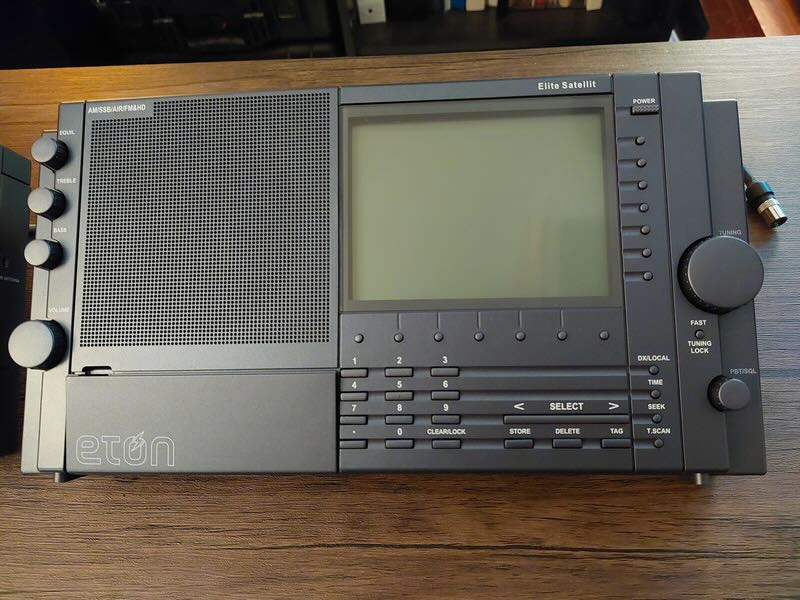
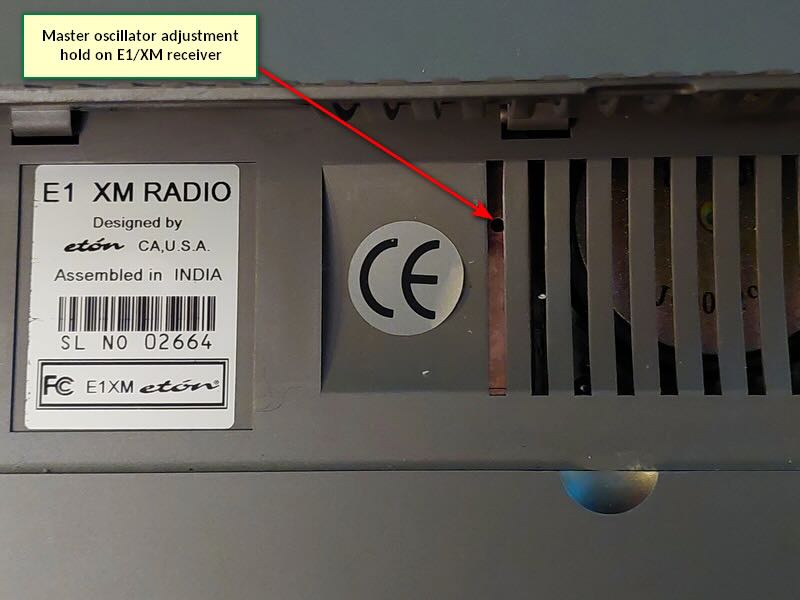


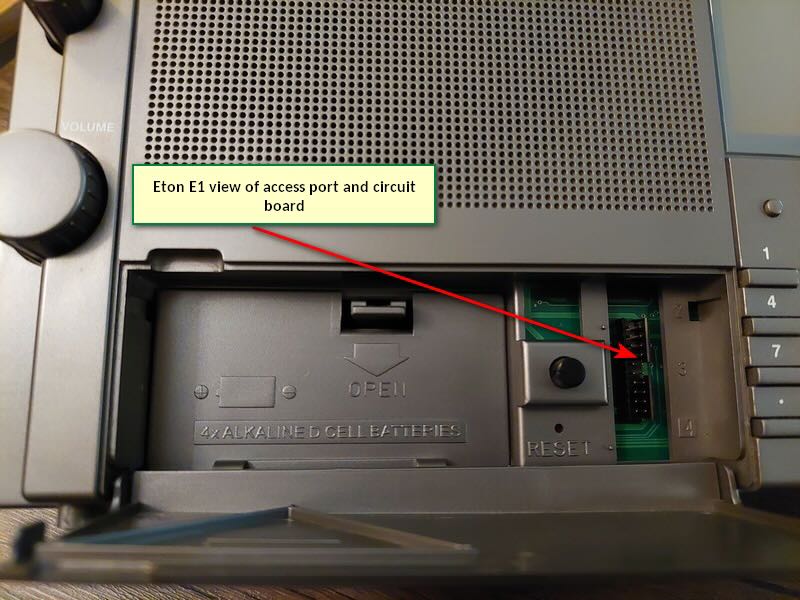
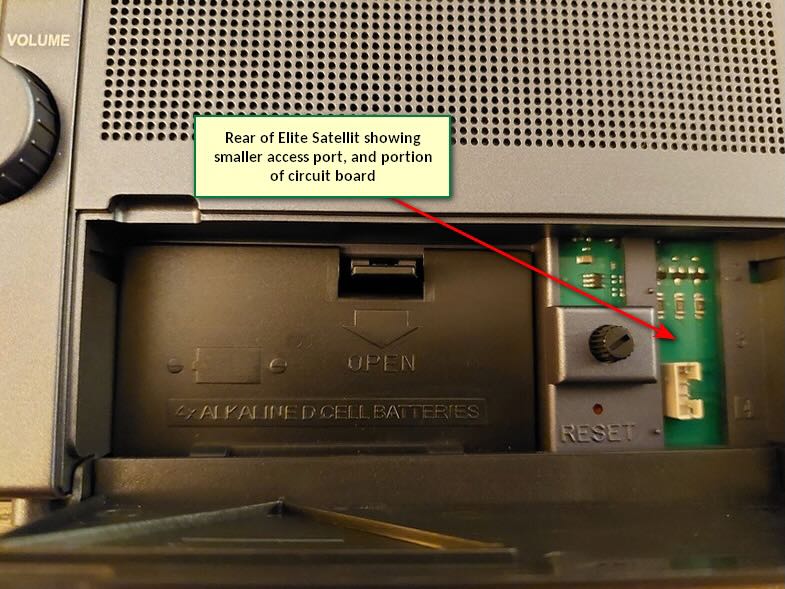
I have not heard anyone mention this defect I found. When you’re on SW (not SW BAND) and you tune past 30,000 kHz, the display doesn’t wrap to 1,715 kHz and stay on SW as you might expect. Instead it jumps bands to MW and lands on the previously selected MW frequency.
I think this radio’s failure will be too expensive for Eton to properly address/fix, firmware can do a lot but it can’t overcome the underlying hardware design flaws.
And I have a feeling Eton will get out of the shortwave business entirely after such a massive boondoggle.
The latest comments here come amid news emerging that Eton may be re-releasing the Elite Satellit in mid-September. We’re trying to obtain additional information on this (the news broke on the Groups.io group for the radio). So, we know that Eton, having recalled radios, intends to carry out a firmware upgrade. Problem is that this will not likely correct issues such as poor AGC, horrendous PBT, and loose telescopic antennas. We shall see…
This is a case for Hercule Poirot to decipher, quite a mystery, but let us not forget that previous Eton radios came with defects that showed up immediately or later on and with Eton not even acknowledging some.
More, it puzzles me that the company does not have in-house repairs and has not published service manuals for its radios.
One more thing, Eton has terrible names for their radios. The names are not intuitve to communicate if it is this their flag ship, mid class or entry level model. The names all sound and look similar, this diminishes they’re branding and makes it frustrating to customers.
Regards, Dan
Hi Dan, thanks for taking the time to write this. I share the pessimism of some of the other commenters that it will make a difference.
I also got my hands on one of radios, and found every one of the shortcomings you noted to be present, plus one more: remarkably poor susceptibility to intermod and overload when used with an external antenna, even with the “DX/LOCAL” setting set to local. Though I’m not in the shadow of any stations, MW broadcast stations just bleed through everywhere. Much worse than the Tecusn radios (on which I’ve also noted susceptibility to intermod). In that sense, it doesn’t matter what kind of antenna jack it uses, since an external antenna is kind of useless on this radio to begin with.
I don’t think Eton/Grundig can fix many of these problems with a software update or minor hardware tweaks alone. Bringing this radio to acceptable standards at the price point they’ve chosen would likely require significant re-engineering of the hardware. And I doubt that’s in the cards.
I’m ready to write this off, I think.
Mediocre radio and $700 totally overpriced! I still can’t believe how they came up with such a bad radio! Even if they fix the problems Dan mentioned, $700 is still way too high a price!
The condescending tone of your letter will probably not be helpful in resolving the problems you’re highlighting. Scolding them as though they are six years old seems counterproductive. A straightforward documentation of the issues without the ‘I can’t believe you did this’ or the anguished ‘WHY’ would have been better. Of course that depends on your intent.
Understand your point, but these are multi-zillion dollar companies. If they can’t take some straight criticism, especially when they come out with a product that is so obviously flawed, they should be out of the business.
shawn,
I have dozens of radios over 50+ years and doesn’t matter how my memory is. I have the E1XM next to me, up against a Drake 8 and other high end radios. Sent mine to Drake, had a clean bill of health so that and Passport to Worldband radio’s test by engineers said it is a great radio. I got the Circuit City deal, not quite that cheap but close. Things we’d like to change? Did they screw up? Sure did. I think Dan’s letter, my letter I sent and hopefully others, especially distributers has a positive effect. Could Just might push them out of SW radio business as well. Action and time will tell.
Good Job Dan R.
I think Eton is using the same cases they were using in 2002 probably from unsold inventory of the E1, every single detail of the New Eton Satelitt right down to the screws and lettering are identical. Just the logo was changed. It also explains why they would keep the horribly outdated old European style PAL antenna input and things like that.
The E1 was a horrible failure, had an extremely high return rate, and you could get them at Best Buy for under $200 in a fire sale they held. But faded memories lead to people believing the E1 were great radios. The development of this radio bankrupted Grundig and probably Drake also.
I see no need for this radio, certainly not at the $700 price point. Even if it works as promised
shawn,
I have dozens of radios over 50+ years and doesn’t matter how my memory is. I have the E1XM next to me, up against a Drake 8 and other high end radios. Sent mine to Drake, had a clean bill of health so that and Passport to Worldband radio’s test by engineers said it is a great radio. I got the Circuit City deal, not quite that cheap but close. Things we’d like to change? Did they screw up? Sure did. I think Dan’s letter, my letter I sent and hopefully others, especially distributers has a positive effect. Could Just might push them out of SW radio business as well. Action and time will tell.
Good Job Dan R.
I don’t agree that the E1 was a failure, let alone a horrible one. I have here my E1 receipt from Universal Radio, ordered on 12/11/2007 for $399.95. I’m looking at the E1 I received from that order right now and I use it every day (so not a faded memory) and it runs rings around any other portable SW receiver I have owned since the 1980’s, including the best regarded Tecsuns, only the Sony ICF2010 being close.
Agree 100%. The original E1/XM was and is a great radio. This updated version is nothing like it apparently.
This letter will just fall on deaf ears unfortunately. Eton probably doesn’t care about the issues mentioned because if they were serious about producing a high end shortwave portable these QC issues and design faults would not have appeared.
The shortwave portable market is a niche one dominated by cheap and nasty ripoff designs from China – with some exceptions like Sangean who know how to make real receivers. My point is that it’s just not feasible to produce a high end shortwave portable in todays marketplace as the ROI is just not there.
If one wants a true high end shortwave portable/portatop they will need to go down the ham transceiver or SDR route. The malchite is the right idea but its ergonomics are poor. The Tecsun DSP receivers also are not high end shortwave receivers despite their high price tags. They all suffer from poor SSB demodulation and lousy dynamic range.
Sangean is not Chinese and the newer Tecsun’s, (H501 and PL990) are good radios, not as good in somethings but better in other ways than Sony’s of the yesteryears
Did Eton poll a shortwave audience before this radio made it out of the design stage? I also wonder if anyone at Eton is an actual shortwave hobbyist?
It’s abundantly clear the Elite Satellit was pushed out the door with little real engineering or consumer testing. Staffing shortages and resource limitations have hit all electronic manufacturers in the past couple of years. Competition is strong with radios of equal or greater performance selling in the $300-$400 range. It is these considerations I believe will force Eton to close the book on the Elite Satellit and liquidate the existing inventory.
I was a bit miffed by the PAL connector terminology.
Do these connectors only accept Phase Alternate Line tv signals,
and reject NTSC or SECAM, erm no 😉
The correct nomenclature is a Belling Lee connector.
Everyone seems to be taking pot shots at the PAL external ant. connection.Having a E-1 XM from the beginning,I found that it was a much more solid connection than many receivers with a 1/8 th inch input (3.5 mm). This is even more important if you were relocating the radio with less stress on that all important connection.Once you get the adapter needed for your particular ant. set-up,it is much more solid than plugging into a delicate jack that is inside the cabinet and usually covered by plastic.And so it goes for me,smooth sailing
Excellent letter Dan, well written, well-thought out, and polite yet to the point. I do think Eton will listen and I know they read this blog, (well, I am confident they do!). How much will get fixed remains to be seen, and what if anything will happen to the current price-point also remains to be seen.
Eton has been a great company and a great supporter of Shortwave in an era where many companies (and stations 🙁 sadly) have abandoned SW. Let’s hope their commitment does not waver, that they investigate what went wrong in their design/testing and QC departments, and they make the necessary corrections all around.
Cheers!
Robert,
I’m in full agreement with you.
Cheers, Jock
May i know where is this Radio made? the previous model was from India with rumored components by Tecsun
Beautifully written and explained. Regrettably I have my doubts if anybody in Eton leadership reads this great blog or will care to do any more than a few “quick fixes” and pushing the radio back into the market.